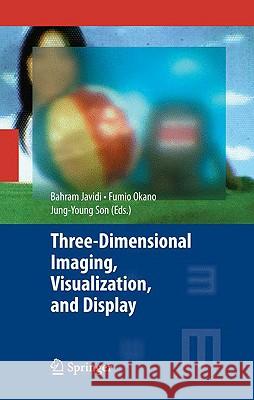Three-Dimensional Imaging, Visualization, and Display » książka
Three-Dimensional Imaging, Visualization, and Display
ISBN-13: 9780387793344 / Angielski / Twarda / 2008 / 531 str.
Three-Dimensional Imaging, Visualization, and Display
ISBN-13: 9780387793344 / Angielski / Twarda / 2008 / 531 str.
(netto: 365,46 VAT: 5%)
Najniższa cena z 30 dni: 382,84 zł
ok. 20 dni roboczych.
Darmowa dostawa!
The history of visual media is characterized by drawing, painting, photo, stereoscope, TV and displays, Holography, and HDTV. Three-dimensional (3-D) imaging, visualization, and display technology is the next phase in this historicaldevelopment.Thereisnodoubtthat3-DTVand3-Ddisplayarethe visualmediathatwillsucceedHDTVinnearfuture.Theevolutionarymerging of communication and broadcast technologies will be enhanced by 3-D vi- alization, including multimedia communication centers which can respond to all the services and functions provided by the future communication systems. Comparison of a scene presented by 2-D and 3-D images reveals that the 3-Dimage providesmuch more pleasing and realisticinformationthan its 2-D version. The bene?ts provided by 3-D images result from the depth infor- tion they preserve.Depth gives viewers the feeling of being in the place where the 3-D image is captured (i.e., immersive feeling) and the feeling of being present (presence feeling). Depth increases e?ciencies in remote site ope- tions, suchasremotemedicalandtele-operations, bymakingviewersperceive the scene as more real from within their living environments. The accuracy andthepresencefeelingarethemainmotivesofdemandsfor3-Dimagesinthe areasofcommunication, broadcasting, entertainment, medicaloperations, v- tual world presentations, advertisement, training, edutainment (education + entertainment), telemarketing, tele-presence, tele-conference, visualization of experimental results, and so on.











